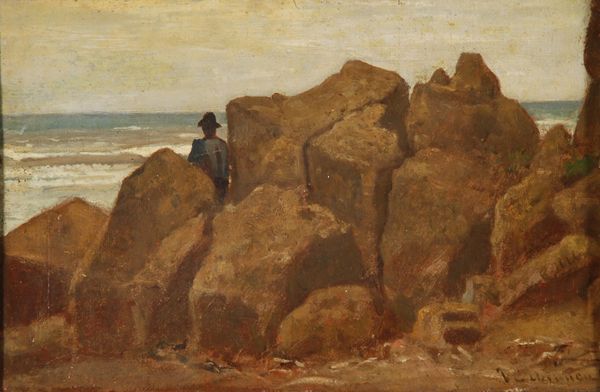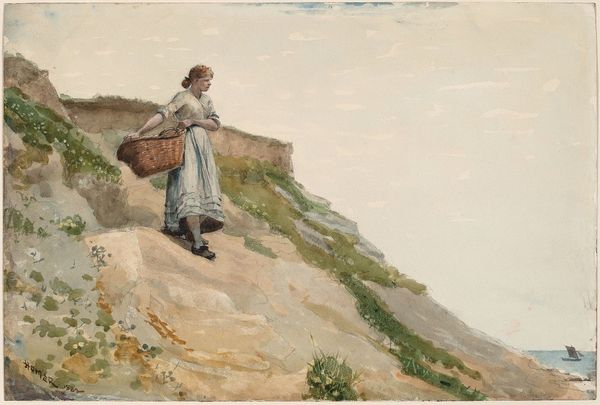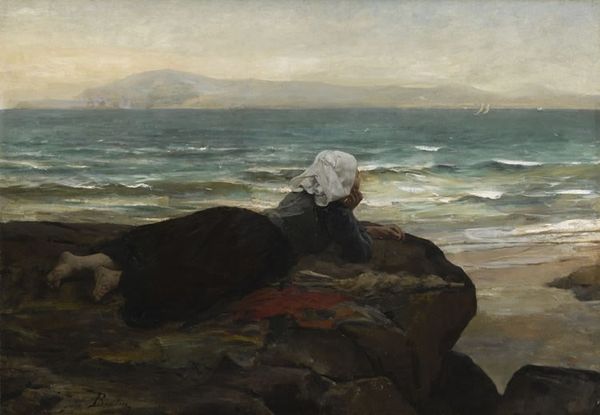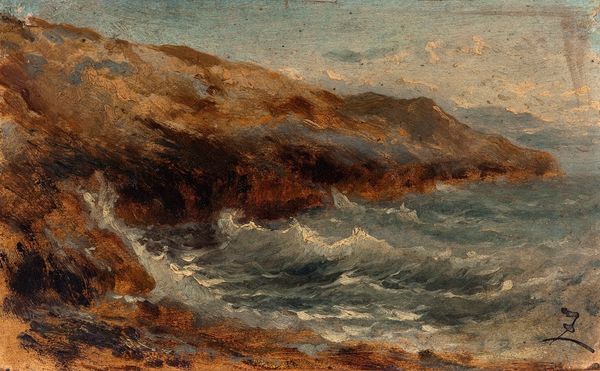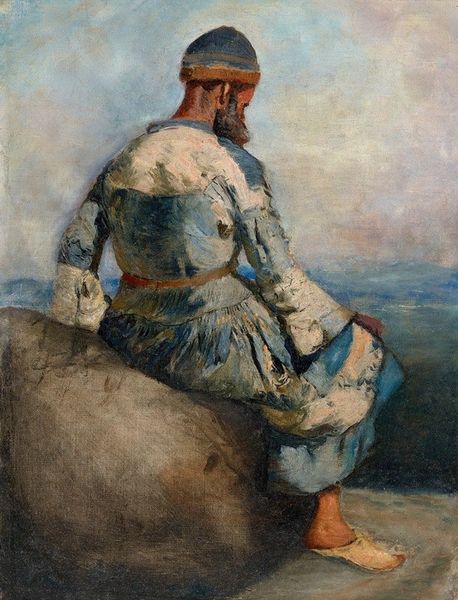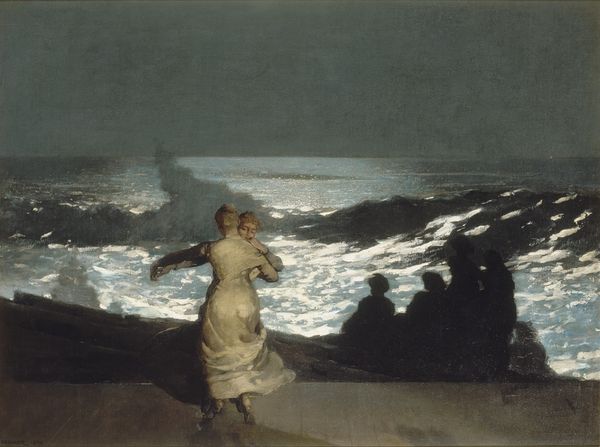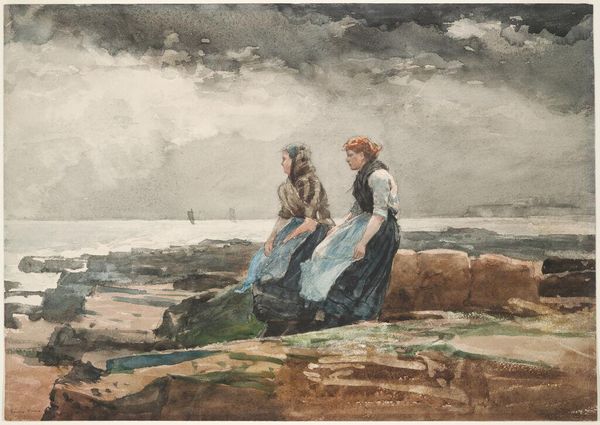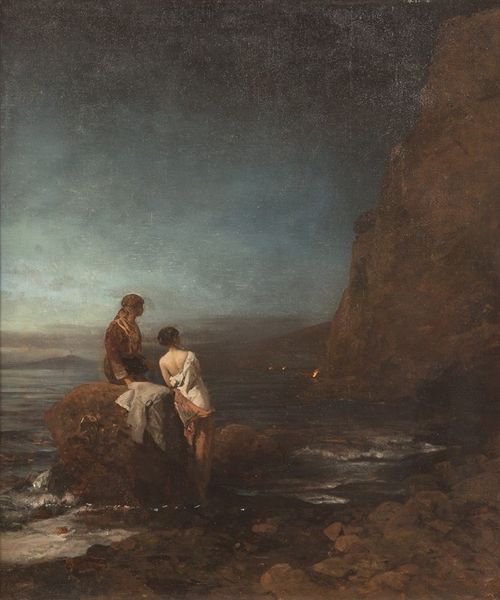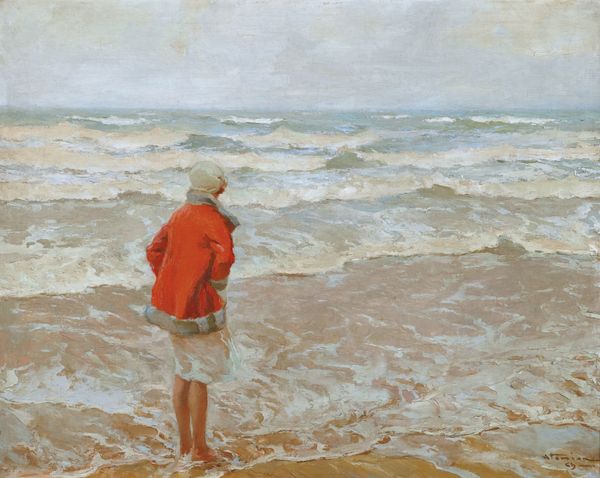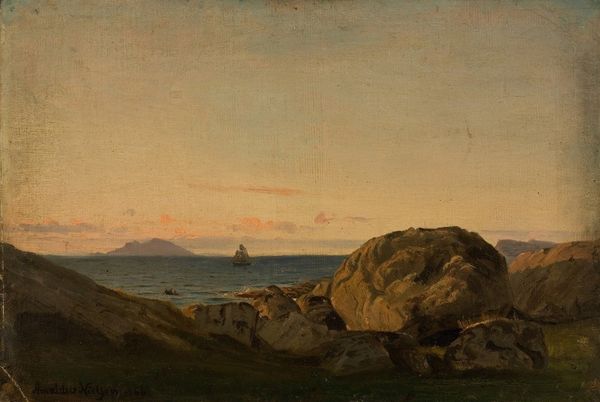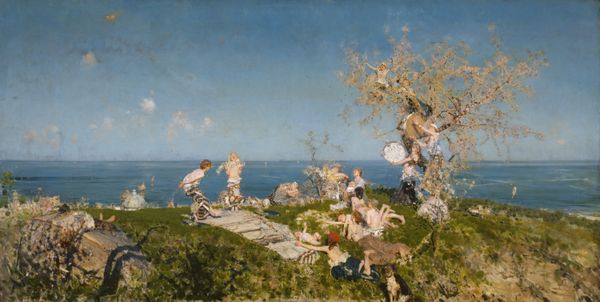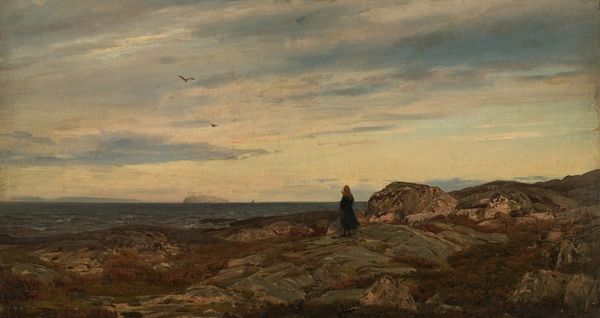
Dimensions: 38.5 x 44 cm
Copyright: Public domain
Editor: So, this is Jules Breton’s "Spinner on the Rocks in Douarnenez" from 1870, an oil painting. The woman sitting by the sea, so still, creates this profound feeling of solitude and calm, like the world is holding its breath. What do you make of it? Curator: Consider first the interplay between the figure and the landscape. Observe how the artist strategically positions the figure within the composition. The subtle gradations of color in the water—the blues and greys—echo the woman’s somber clothing. Notice the texture created by Breton's brushstrokes; how does it contribute to the overall aesthetic? Editor: The brushstrokes are quite visible, especially in the rocks. They add such rawness to the piece. What does that signify in the broader context? Curator: The visible brushwork, far from being accidental, calls attention to the painting's surface and the act of creation itself. The texture provides a material presence, underscoring its existence as an object, not merely a representation. Editor: So, it is not just what is depicted, but how it is depicted, the pure artistry involved? Curator: Precisely. The way Breton uses color and texture builds up the structural essence of the painting itself, overriding a simple narrative interpretation. It calls us to contemplate the medium's inherent qualities. The interplay between the woman, the sea, and the land is secondary to this structural expression. What did you learn looking at this piece today? Editor: It changed how I see paintings. The essence transcends subject matter. How do you think this changed your perspective, or perhaps, reaffirmed something? Curator: It affirmed the significance of materiality. Analyzing this piece revealed the depth an artist can achieve simply by exploring color and texture within the constraints of their chosen medium.
Comments
No comments
Be the first to comment and join the conversation on the ultimate creative platform.
